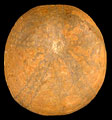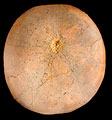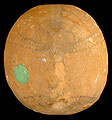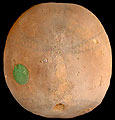Distinguished from the rather similar Pygorhytis by having the periproct and peristome flush, without the obvious subanal groove and keels of that genus. Pygomalus also differs in having ambulacra and the peristome flush and not sunken, in contrast to Pygorhytis. Close to Collyrites, but easily distinguished by having the posterior ambulacra eminating from ocular plates that border the periproct, rather than at some distance removed from the periproct.
The Upper Pliensbachian record of this genus is discussed in Vadet et al. (1995)
Barras, C. 2006. British Jurassic irregular echinoids. Monograph of the Palaeontographical Society, 1-168, pls 1-14 (publication number 625).
Jesionek-Szymanska, W. 1963. Echinides irreguliers du Dogger de Pologne. Actes Palaeontologica Polonica 8(3), 293-396.
Pomel, A. A. 1883. Classification méthodique et Genera des Échinides vivante et fossiles. Thèses présentées a la Faculté des Sciences de Paris pour obtenir le Grade de Docteur ès Sciences Naturelles 503, Aldolphe Jourdan, Alger, 131 pp.
Solovjev, A. 1971. Late Jurassic and Early Cretaceous disasterids of the USSR. Transactions of the Palaeontological Institute, Academy of Sciences of the USSR 131, 1-120, pls 1-16 [in Russian]
Thierry, J. 1992. Variations morphologiques de l\'oursin irregulier Disasteroidea Collyrites (Pygomalus) analis (Agassiz). Geobios Memoir special 14, 123-132.
Vadet, A., Thierry, J., Rioult, M. & Guitton, M. 1995. Presence de Pygomalus ovalis dans le Carixien superieur. Memoires de la Societe academique de Boulonnais 16, 60-62.






